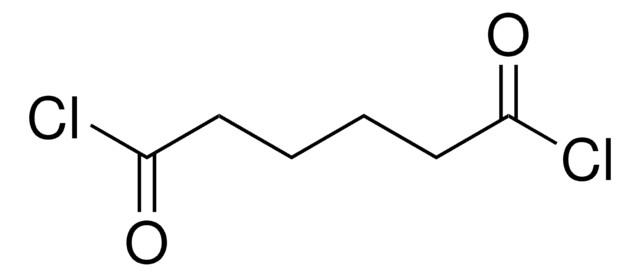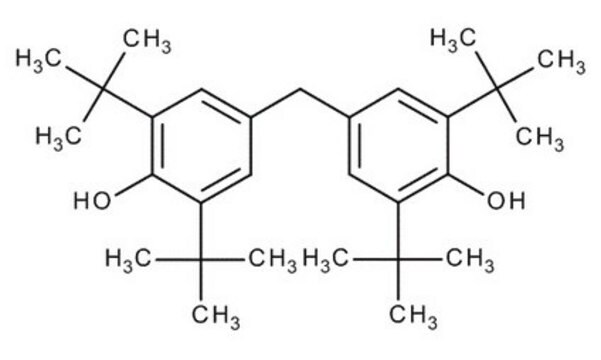Wichtige Dokumente
422002
1,6-Diaminohexan
technical grade, 70%
Synonym(e):
1,6-Hexandiamin, HMDA, Hexamethylendiamin
About This Item
Empfohlene Produkte
Qualität
technical grade
Qualitätsniveau
Dampfdichte
4 (vs air)
Assay
70%
Form
liquid
Expl.-Gr.
6.3 %
Methode(n)
gas chromatography (GC): suitable
Brechungsindex
n20/D 1.439 (lit.)
bp
111-130 °C
mp (Schmelzpunkt)
42-45 °C (lit.)
Löslichkeit
alcohol: soluble(lit.)
hydrocarbons: soluble(lit.)
water: soluble(lit.)
Dichte
0.89 g/mL at 25 °C (lit.)
Funktionelle Gruppe
amine
SMILES String
NCCCCCCN
InChI
1S/C6H16N2/c7-5-3-1-2-4-6-8/h1-8H2
InChIKey
NAQMVNRVTILPCV-UHFFFAOYSA-N
Angaben zum Gen
rat ... Ppm1a(24666)
Suchen Sie nach ähnlichen Produkten? Aufrufen Leitfaden zum Produktvergleich
Allgemeine Beschreibung
Anwendung
- polyamides and their hydrolytic and fungal degradability was investigated
- mullite ceramics
- dialkyl hexamethylene-1,6-dicarbamate (AHDC), via trans-esterification reaction of HDA and alkyl carbamates (AC) using FeCl3 as catalyst
Sonstige Hinweise
Signalwort
Danger
H-Sätze
Gefahreneinstufungen
Acute Tox. 4 Oral - Eye Dam. 1 - Skin Corr. 1B - STOT SE 3
Zielorgane
Respiratory system
Lagerklassenschlüssel
8A - Combustible corrosive hazardous materials
WGK
WGK 1
Flammpunkt (°F)
201.2 °F
Flammpunkt (°C)
94 °C
Hier finden Sie alle aktuellen Versionen:
Besitzen Sie dieses Produkt bereits?
In der Dokumentenbibliothek finden Sie die Dokumentation zu den Produkten, die Sie kürzlich erworben haben.
Kunden haben sich ebenfalls angesehen
Unser Team von Wissenschaftlern verfügt über Erfahrung in allen Forschungsbereichen einschließlich Life Science, Materialwissenschaften, chemischer Synthese, Chromatographie, Analytik und vielen mehr..
Setzen Sie sich mit dem technischen Dienst in Verbindung.














